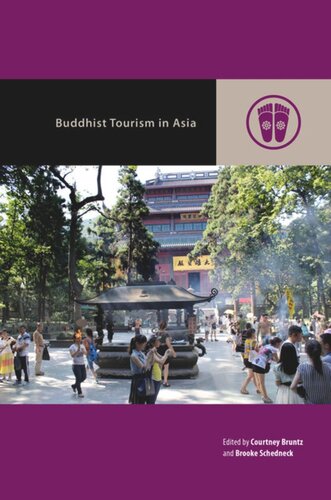

Most ebook files are in PDF format, so you can easily read them using various software such as Foxit Reader or directly on the Google Chrome browser.
Some ebook files are released by publishers in other formats such as .awz, .mobi, .epub, .fb2, etc. You may need to install specific software to read these formats on mobile/PC, such as Calibre.
Please read the tutorial at this link: https://ebookbell.com/faq
We offer FREE conversion to the popular formats you request; however, this may take some time. Therefore, right after payment, please email us, and we will try to provide the service as quickly as possible.
For some exceptional file formats or broken links (if any), please refrain from opening any disputes. Instead, email us first, and we will try to assist within a maximum of 6 hours.
EbookBell Team

5.0
110 reviewsThis innovative collaborative work—the first to focus on Buddhist tourism—explores how Buddhists, government organizations, business corporations, and individuals in Asia participate in re-imaginings of Buddhism through tourism. Contributors from religious studies, anthropology, and art history examine sacred places and religious monuments as they have been shaped and reshaped by socio-economic and cultural trends in the region.
Following an introduction that offers the first theoretical understanding of tourism from a Buddhist studies’ perspective, early chapters discuss the ways Buddhists and non-Buddhists imagine concepts and places related to the religion. Case studies highlight Buddhist peace in India, Buddhist heavens and hells in Singapore, Thai temple space, and the future Buddha Maitreya in China. Buddhist tourism’s connections to the state, market, and new technologies are explored in chapters on Indian package tours for pilgrims, thematic Buddhist tourism in Cambodia, the technological innovations of Buddhist temples in China, and the promotion of pilgrimage sites in Japan. Contributors then situate the financial concerns of Chinese temples, speed dating in temples in Japan, and the diffuse and pervasive nature of Buddhism for tourism promotion in Ladakh, India.
How have tourist routes, groups, sites, and practices associated with Buddhism come to be possible and what are the effects? In what ways do travelers derive meaning from Buddhist places? How do Buddhist sites fortify national, cultural, or religious identities? The comparative research in South, Southeast, and East Asia presented here draws attention to the intertwining of the sacred and the financial and how local and national sites are situated within global networks. Together these findings generate a compelling comparative investigation of Buddhist spaces, identities, and practices.